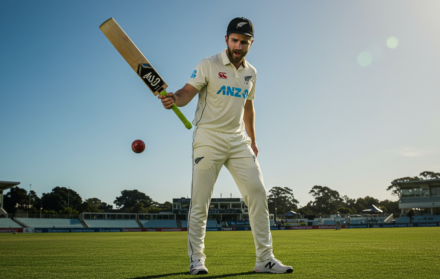
Whats The Importance Of Bowling Partnerships In Cricket
Bowling partnerships play a crucial role in the game of cricket, contributing significantly to a team’s success. A study conducted by cricket analyst David Scott explores the importance of such partnerships in the sport. Bowling partnerships involve the collaboration between two bowlers on the field, with the aim of collectively taking wickets and containing the opposition’s scoring.
Sharing the workload is one of the primary reasons why bowling partnerships are important. By rotating bowlers, teams can avoid the exhaustion and decreased effectiveness that can occur when a single bowler shoulders the entire bowling responsibility. This ensures that bowlers remain fresh and can maintain their performance levels throughout the innings.
Building pressure on the batsmen is another crucial aspect of successful bowling partnerships. By consistently delivering accurate and threatening deliveries, bowlers can create a sense of uncertainty and vulnerability for the opposing batsmen. This pressure increases the likelihood of inducing mistakes and taking wickets.
Taking wickets consistently is the ultimate goal of bowling partnerships. The collaboration between bowlers allows them to work in tandem, using different styles, angles, and variations to trouble the batsmen. This collaborative effort can lead to a higher number of wickets and ultimately restrict the opponent’s scoring potential.
Successful bowling partnerships possess certain characteristics. Effective communication and coordination between the bowlers are key to maintain a cohesive strategy and prevent any gaps in the bowling attack. Understanding each other’s strengths and weaknesses helps in planning and executing tactics that exploit the weaknesses of the opposition batsmen.
Setting up batsmen and creating opportunities is crucial in bowling partnerships. Bowlers work together to create challenging situations for the batsmen, such as setting traps, changing lines and lengths, and planning for specific dismissals. This teamwork increases the chances of breakthroughs and puts the team in a better position.
Examples of memorable bowling partnerships in cricket include the duo of Wasim Akram and Waqar Younis from Pakistan, Glenn McGrath and Shane Warne from Australia, and Malcolm Marshall and Michael Holding from the West Indies. These partnerships showcased the effectiveness of collaboration, skill, and strategy in bowling.
The importance of bowling partnerships varies across different formats of cricket. In test cricket, where sustained pressure is crucial, successful bowling partnerships can dictate the outcome of a match. In One Day Internationals (ODIs), partnerships are essential to control run rates and take wickets at crucial stages. In Twenty20 (T20) cricket, partnerships aim to restrict the opposition’s scoring and break crucial batting partnerships.
The Role of Bowling Partnerships in Cricket

Bowling partnerships in cricket play a critical role in the success of a team. They are like a well-oiled machine, each bowler complementing the other to create a formidable force on the field. In this section, we will dive into the significance of these partnerships.
From sharing the workload to building pressure on batsmen and taking wickets consistently, we will explore how these elements pave the way for victory. So, lace up your cricket boots and get ready to discover the secrets behind successful bowling partnerships.
Sharing the Workload
- Sharing the workload in cricket is crucial for successful bowling partnerships.
- To maintain performance throughout a match and prevent fatigue or injuries, bowlers can employ various techniques.
- One strategy is to rotate bowlers, allowing each one enough rest between spells.
- Another approach is to have a variety of skills within the partnership, such as pace, swing, or spin.
- Bowling in shorter, more energetic bursts instead of long spells can also help distribute the workload.
- Bowlers can support each other by providing feedback and encouragement to maintain motivation and focus.
- Collaborating with the captain to set up effective field placements and plan strategies is also important.
By sharing the workload, bowlers can maintain their performance levels and increase their chances of success in a match.
Building Pressure on the Batsmen
Building pressure on the batsmen is a crucial aspect of successful bowling partnerships in cricket. By maintaining a consistent and disciplined line and length, the bowlers can effectively build pressure on the batsmen, creating a challenging environment for them.
This sustained pressure often forces the batsmen to make mistakes, leading to crucial wickets for the bowling side. The key to achieving this lies in constantly attacking the stumps, varying the pace and length of deliveries, and executing well-thought-out plans to outsmart the batsmen. Notable examples of formidable bowling partnerships that excelled in building pressure on the batsmen include the legendary duos of Wasim Akram and Waqar Younis, Glenn McGrath and Shane Warne, as well as Malcolm Marshall and Michael Holding.
The ability to build pressure on the batsmen becomes even more crucial in Test matches, where endurance and perseverance play vital roles in wearing down the opposition.
Taking Wickets Consistently
Taking wickets consistently is crucial for a successful bowling partnership in cricket. It not only puts pressure on the opposition but also helps to control the game and create opportunities for the team.
- Accuracy: Bowling consistently in the right areas increases the chances of taking wickets.
- Variety: Having a mix of bowling styles and variations keeps the batsmen guessing and increases the likelihood of breakthroughs.
- Strategy: Working together to set up batsmen by creating pressure, bowling tight lines, and exploiting weaknesses can lead to taking wickets consistently.
- Support: The bowlers must support and communicate effectively to maintain pressure and capitalize on any mistakes made by the batsmen.
A true story illustrating the importance of taking wickets consistently is the partnership of Wasim Akram and Waqar Younis for Pakistan. Their lethal combination of swing and pace resulted in consistently taking wickets and played a key role in Pakistan’s success in the 1990s.
The Characteristics of Successful Bowling Partnerships

Successful bowling partnerships in cricket are built upon key characteristics that make them formidable on the field. In this section, we will explore the crucial elements that contribute to the strength and effectiveness of these partnerships.
From seamless communication and coordination to a deep understanding of each other’s strengths and weaknesses, these dynamic duos have the ability to set up batsmen and create game-changing opportunities. Get ready to uncover what it takes to form a winning bowling partnership in the thrilling world of cricket.
Communication and Coordination
Effective communication and coordination between bowling partners is crucial in cricket. This ensures a synchronized approach, which leads to enhanced performance and increased chances of taking wickets. Here are some steps to improve communication and coordination:
- Establish clear signals and communication methods.
- Regularly discuss strategies and plans during breaks.
- Stay in constant communication during the match to adjust tactics as needed.
- Synchronize run-ups and bowling speeds to maintain pressure.
- Keep each other updated on fielding positions and plans.
A great example of effective communication and coordination in bowling partnerships is the legendary duo of Wasim Akram and Waqar Younis. They seamlessly worked together, using subtle signals and synchronized strategies to dismantle batting lineups. This effective partnership played a significant role in their team’s success.
Understanding Each Other’s Strengths and Weaknesses
Understanding each other’s strengths and weaknesses is absolutely vital for successful bowling partnerships in the game of cricket. It enables bowlers to effectively complement each other’s skills and coordinate their strategies. The following are the key aspects of this understanding:
- Communication: Open and clear communication plays a crucial role as it helps bowlers to know and understand each other’s plans. This allows them to adjust their approach accordingly during a game.
- Complementary Skills: Through understanding each other’s strengths, the bowlers are able to collaborate and work together to exploit the weaknesses of the batsmen they are facing.
- Supportive Roles: In a balanced partnership, one bowler may primarily focus on building pressure, while the other concentrates on taking wickets. Understanding these roles is key to achieving a harmonious collaboration.
- Adaptability: Familiarity with each other’s weaknesses empowers bowlers to provide the necessary support and cover any potential vulnerabilities. This adaptability enhances their overall performance on the field.
- Trust: Trust and mutual respect between partners are essential for maintaining a strong bowling partnership. This foundation of trust fosters effective communication and collaboration between the bowlers.
Setting Up Batsmen and Creating Opportunities
Creating opportunities and setting up batsmen are crucial aspects of successful bowling partnerships in cricket. Here are some steps to achieve this:
- Identify the batsman’s weaknesses, such as playing against spin or short-pitched deliveries.
- Plan the delivery based on the batsman’s weaknesses, aiming to exploit them.
- Bowl consistent lines and lengths to build pressure on the batsman.
- Set up the batsman by bowling a series of deliveries to lure them into a false sense of security.
- Vary the pace and trajectory to keep the batsman guessing and increase the chances of inducing a mistake.
Pro-tip: Effective communication between bowling partners is essential in coordinating strategies and executing plans successfully.
Examples of Memorable Bowling Partnerships in Cricket

What makes a great bowling partnership in cricket? Let’s dive into some memorable examples that define the art of bowling collaborations. From the prowess of Wasim Akram and Waqar Younis to the genius duo of Glenn McGrath and Shane Warne, and the relentless force of Malcolm Marshall and Michael Holding, we will explore the dynamic duos that have left a lasting imprint on the cricketing world. Get ready to witness the magic of teamwork, skill, and coordination on the bowling front.
Wasim Akram and Waqar Younis
Wasim Akram and Waqar Younis formed one of the most lethal bowling partnerships in cricket history. Their combination of pace, swing, and accuracy wreaked havoc on opposing batsmen.
Their ability to swing the ball both ways, especially with the old ball, made them a nightmare for batsmen. They worked in tandem to create pressure, take wickets consistently, and restrict the opposition’s scoring. Their success contributed significantly to Pakistan’s victories in both Test matches and One-Day Internationals.
Glenn McGrath and Shane Warne
Glenn McGrath and Shane Warne formed one of the most iconic bowling partnerships in cricket history. Known for their exceptional skill and teamwork, McGrath and Warne dominated the cricket world in the late 1990s and early 2000s.
McGrath’s accurate line and length complemented Warne’s spin wizardry, making them a formidable duo. Together, Glenn McGrath and Shane Warne took over 1200 wickets in Test cricket, wreaking havoc on opposing batting line-ups.
Their ability to work in tandem, create pressure, and consistently take wickets made Glenn McGrath and Shane Warne a nightmare for batsmen. The partnership of McGrath and Warne was crucial to Australia’s success in both Test matches and One Day Internationals, earning Glenn McGrath and Shane Warne the status of bowling legends.
Malcolm Marshall and Michael Holding
Malcolm Marshall and Michael Holding were one of the most formidable bowling partnerships in cricket history. Their combination of skill, pace, and accuracy made Malcolm Marshall and Michael Holding a nightmare for batsmen. Marshall was known for his ability to generate tremendous pace and bounce, while Holding possessed a smooth and effortless bowling action.
Together, Malcolm Marshall and Michael Holding often demolished batting line-ups, taking wickets consistently and building immense pressure on the opposition. Their partnership, Malcolm Marshall and Michael Holding, played a significant role in the success of the West Indies cricket team during the 1980s. Malcolm Marshall and Michael Holding’s brilliance on the field has made them legendary figures in the sport.
The Importance of Bowling Partnerships in Different Formats of Cricket

Bowling partnerships play a crucial role in the game of cricket, impacting the outcomes in various formats. As we explore the significance of bowling partnerships in different cricket formats, we’ll uncover fascinating insights.
From the strategic collaborations in Test Cricket to the dynamic partnerships in One Day Internationals and the high-intensity teamwork in Twenty20 Cricket, we’ll reveal how these alliances shape matches and contribute to team success. Prepare to discover the secrets behind the importance of bowling partnerships in cricket’s diverse landscapes.
Test Cricket
Test cricket is widely regarded as the ultimate form of cricket, lauded for its extended duration and strategic essence. In this revered format, the art of bowling flourishes through establishing effective partnerships that ultimately determine a team’s triumph.
An accomplished bowling alliance in Test cricket thrives on seamless communication, profound understanding of each other’s capabilities and limitations, and the deft ability to manufacture opportunities to claim coveted wickets.
Noteworthy examples of iconic bowling collaborations in Test cricket encompass the legendary tandems of Wasim Akram and Waqar Younis, Glenn McGrath and Shane Warne, and Malcolm Marshall and Michael Holding. These formidable partnerships have undeniably played a pivotal role in their respective teams’ triumphs by incessantly mounting pressure on batsmen and capturing vital dismissals.
A tale worth recounting is the extraordinary bowling partnership between James Anderson and Stuart Broad, whose combined prowess and adaptability in diverse conditions have been instrumental in England’s resounding success.
One Day Internationals
One Day Internationals (ODIs) are a popular format in cricket characterized by several key features. Typically, ODIs are played over 50 overs per team, with each team comprising 11 players. A defining aspect of ODIs is the limited overs format, where each team is allocated a specific number of overs to bat.
The match’s outcome is determined by the team with the highest score at the end of the allotted overs. Specific rules and regulations tailored to ODIs govern gameplay, ensuring fair competition and adherence to standards.
These matches hold significant importance in international cricket rankings, contributing to teams’ standings based on their performance. Furthermore, ODIs enjoy widespread popularity, drawing large crowds of spectators eager to witness thrilling encounters.
The format also hosts prestigious global tournaments such as the ICC Cricket World Cup and ICC Champions Trophy, further solidifying its significance within the cricketing world.
Twenty20 Cricket
In Twenty20 Cricket, bowling partnerships play a crucial role in determining a team’s success. These partnerships are vital for various reasons. They help in sharing the workload, ensuring that bowlers do not get fatigued quickly.
They create pressure on the batsmen by consistently bowling well and restricting scoring opportunities. They aim to take wickets consistently, which is vital in limiting the opposition’s runs. Successful partnerships rely on effective communication and coordination between bowlers.
Understanding each other’s strengths and weaknesses allows them to strategize and set up batsmen for dismissals. Examples of memorable partnerships in Twenty20 Cricket include Lasith Malinga and Jasprit Bumrah for Mumbai Indians in the IPL.
Bowling Partnerships and Team Success

When it comes to the success of a cricket team, bowling partnerships and team success play a crucial role. Here are some reasons why bowling partnerships are important in achieving team success:
- Consistency: Bowling partnerships that work well together can consistently take wickets, putting pressure on the opposition and increasing the team’s chances of success.
- Variety: Different bowlers bring a range of skills and styles to the game, making it harder for batsmen to settle and score runs easily against the team.
- Control: Bowling partnerships that build pressure and restrict the flow of runs can effectively control the game, giving the team an advantage.
- Collaboration: Good coordination between bowlers in a partnership leads to effective fielding and catching opportunities, helping the team take more wickets.
To enhance bowling partnerships and ultimately achieve team success, teams should focus on communication, strategizing, and fitness. Regular practice sessions and thorough match analysis can also help identify and rectify any weaknesses in the bowling partnerships. With these dedicated efforts, a team can foster strong bowling partnerships, leading to greater success for the entire team.
Frequently Asked Questions
What is the importance of bowling partnerships in cricket?
Bowling partnerships in cricket are crucial as they involve two bowlers working together towards a common objective. They require a deep level of understanding, information sharing, and a mutually aligned strategy. This enables the bowlers to apply pressure on the batsmen from both ends and increase the chances of taking wickets.
How do bowling partnerships differ from batting partnerships?
Bowling partnerships in cricket are more subtle compared to batting partnerships. While batting partnerships involve two players working together against the opposition, bowling partnerships focus on working in tandem to execute their bowling plans. The objective of a bowling partnership is to create pressure, restrict scoring opportunities, and take wickets.
What are the key elements of a successful bowling partnership?
A successful bowling partnership in cricket requires a deep level of understanding between the bowlers, information sharing about the batsmen’s weaknesses or strategies, and a mutually aligned strategy to achieve their common objective. Effective communication, coordination, and the ability to compliment each other’s bowling styles are also important factors for a successful bowling partnership.
Can physical appearance contribute to a successful bowling partnership?
While physical appearance does not directly impact the effectiveness of a bowling partnership in cricket, it can contribute to the overall dynamics and teamwork. Similar to batting partnerships, a harmonious and supportive partnership can be fostered when bowlers have a good rapport and understanding with each other, regardless of their physical appearance.
How do lower order partnerships differ from early partnerships?
Lower order partnerships in cricket, involving middle and tail-end batters, tend to be smaller in scale compared to early partnerships. In order to maximize runs before running out of batting partners, the middle and lower order batsmen often score at a higher strike rate. This approach differs from early partnerships that focus on building a solid foundation and seeing off the new ball.
How do partnerships affect the opposition in cricket?
Partnerships in cricket can have a psychological impact on the opposition. Large partnerships, especially those involving top-order batsmen, can demoralize the opposition and create a sense of dominance. On the other hand, partnerships with lower-order batsmen can frustrate the opposition, as their ability to dismiss the team becomes more challenging.





